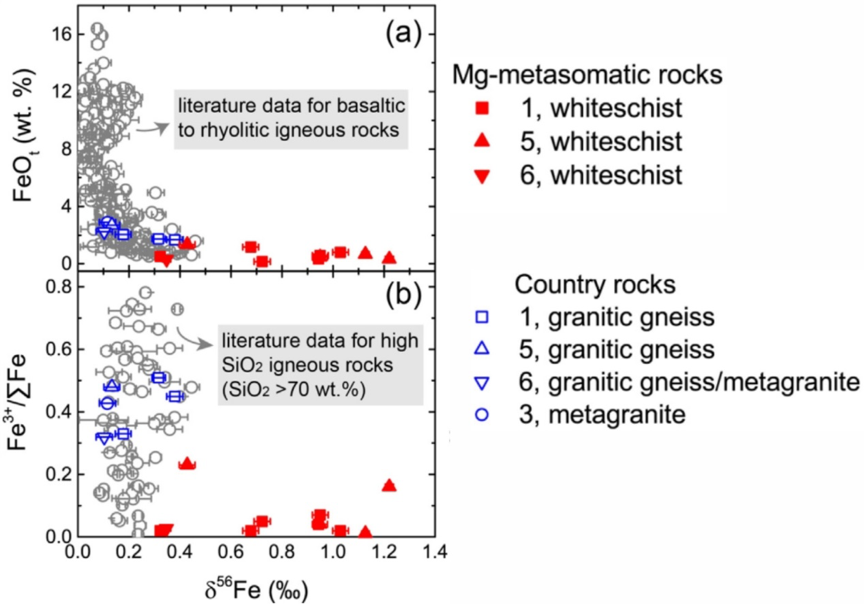The earth is an amazing planet with countless mysteries. It is unique in the solar system, not only for it’s the cradle of innumerable lives, but also for an important sign that the existence of plate tectonics and subduction zones, which distinguishes it from the other terrestrial planets.
The surface of the earth is actually covered by many different plates, including continental crust and oceanic crust. The plates are not static, but in the endless movement and interaction that the new plates are born and ancient plates demise little by little from as early as possibly 4.4 billion years ago. The plate will finally disappear in the subduction zone, where one plate is subducted to the bottom of another plate and enters down into the deep mantle.
Subduction zones are key sites for interaction between Earth’s surface and interior. Fluids released by subducting slabs are essential to the mass transfer at the slab-mantle interface in subduction zones, which regulate the long-term evolution of Earth’s crust-mantle system.
Therefore, fluids released by subducting slabs in subduction zone are important to the understanding of the evolution of Earth’s crust-mantle system. For example, the nature of the subduction zone fluid, its migration mode and redox state have a significant impact on the mobility of metal elements in subduction zone, whose enrichment will form metal deposits that are important for the development of our society. Thus tracing the mobility of redox-sensitive elements (like Fe, C, S) from slab to mantle wedge is important yet very challenging due to the complexity of the fluid-rock system.
In the field of tracing redox heterogeneity of slab-derived fluids through Fe isotopes, professor CHEN Yixiang and his group, form School of Earth and Space Sciences, University of Science and Technology of China, has done a lot of work and made a great progress recently. They collected whiteschists from the Dora-Maira Massif in the Western Alps. Such samples have attracted a great attention worldwide for the first finding of a mineral coesite in them, which indicates for the first time that the continental crust have subducted in the deep mantle of >80 km and then returned to the surface. This finding initiated the forefront research area of continental deep subduction and ultrahigh pressure metamorphism, which greatly advanced the plate tectonics theory. In the previous work, they demonstrated that the whiteschists have a granite protolith, similar to their country rock, which clarified the long-standing controversy on the protolith nature of them. They also found that such rocks show the extremely high δ26Mg values up to +0.75‰, demonstrating that they have experienced metasomatism possibly by a kind of subduction zone fluids derived from serpentinite dehydration at the slab-mantle interface in a continental subduction channel. They thus provide an excellent target to study the mobility of metal elements like Fe during fluid-rock interaction at the subarc depths, which in turn may provide new insights into the property of deep fluids.
The group's recent analysis of Fe isotopes revealed that the whiteschists show also extremely high δ56Fe values of +0.32 to +1.22‰, among the highest values for high-temperature silicate rocks in the world. The Fe isotope composition of whiteschists significantly deviates from the igneous differentiation trend defined by rocks with basaltic to rhyolitic compositions, thus it must be produced by a fluid metasomatic process. The much lower Fe2O3 and FeOtcontents and Fe3+/∑Fe ratios but higher δ56Fe values for the whiteschists relative to their protolith suggest the reduction of Fe3+ to Fe2+ and the loss of isotopically light Fe, probably in the form of Fe(II)-Cl and/or Fe(II)-(HS) complexes, through saline fluids and/or HS- bearing fluids (Fig. 1).

Fig 1. The relationship between whole-rock Fe isotopes and Fe contents.
The reduction of Fe3+ to Fe2+ and the possible presence of HS- suggests the occurrence of relatively reduced fluids. Such reduced fluids were probably derived from serpentinite dehydration at the slab-mantle interface. Therefore, the Fe isotope results demonstrate that the fO2 of the fluids at the slab-mantle interface can be locally highly heterogeneous, leading to various oxidation states in the mantle wedge and arc magmas. This challenges the wide assumption that highly oxidized fluids were released by descending oceanic slab at subarc depths.
Based on the tectonic evolution of the Western Alps orogenic belt, the group further presented a possible model for the fluid metasomatism of metagranites, showing how Fe mobility and Fe isotope fraction during the metasomatic process at the slab-mantle wedge interface in the continental subduction channel (Fig. 2). The proposed model has gained the support of recent geophysical studies that showed a similar subduction-zone structure in the studied area.

Fig.2 Schematic diagram showing the metasomatic process and Fe mobility related to the formation of whiteschist.
In a word, this achievement demonstrates a comprehensive study that provides a unique perspective of subduction fluid metasomatism processes, as well as provides another milestone in the way to understand exchange of oxidising potential among geological reservoirs during subduction processes, as the reviewers gave the high praise.
This study entitling Tracking Fe mobility and Fe speciation in subduction zone fluids at the slab-mantle interface in a subduction channel: A tale of whiteschist from the Western Alps was published in the top journal of Earth sciences Geochimica et Cosmochimica Acta.
Paper link: https://www.sciencedirect.com/science/article/pii/S0016703719305964
(Written by HU Xiaowen, edited by YE Zhenzhen, USTC news center)